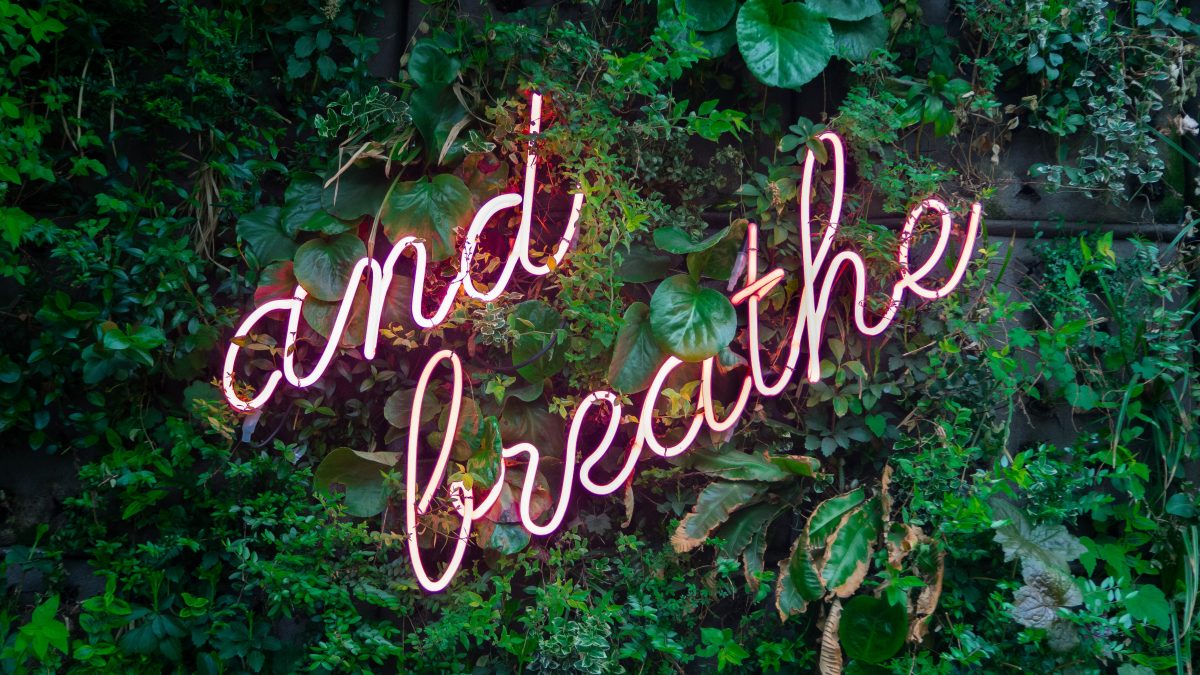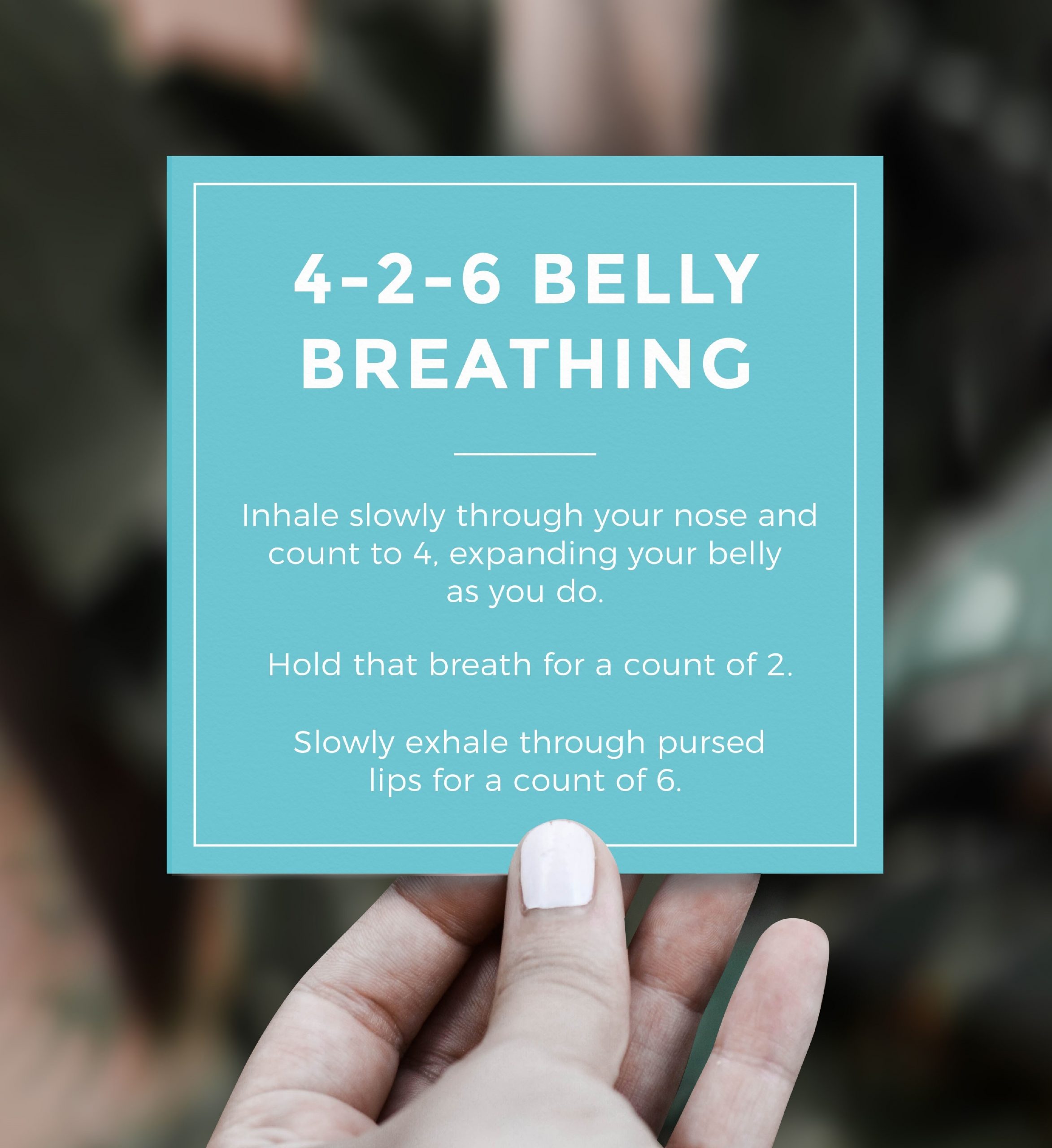
100+ Ideas for Self-Care Activities
August 21, 2018Breathing difficulties are actually the root cause of the most common physical anxiety symptoms.
Breathing difficulties can be in the form of:
- Shallow breathing (breathing in too quickly)
- Over-breathing (breathing in more air as we feel like we’re not getting enough, for example through yawning or sighing frequently)
When we have breathing difficulties, we lower the amount of carbon dioxide (CO2) that’s normally in our blood. Although it often feels like we can’t get enough air, we’re actually getting too much. This is referred to as hyperventilation.
Hyperventilation is what leads to the wide range of symptoms, including:
- Chest tightness
- Shortness of breath
- Heart pounding and racing
- Heart palpitations
- Butterflies in the stomach
- Sweating or hot flushes
- Tingling or numbness in the arms, fingers, toes, or around the mouth
- Feeling dizzy and light-headed
- Weakness
- Feeling sick
- Feelings of unreality (of the self and/or the world)
How to Test Your Breathing
- Put one hand on your chest, and one on your belly
- Breathe for a few seconds. Which hand rises?
- If it’s your chest, you might have developed a habit of shallow and/or over-breathing
Cultivating the habit of belly breathing is a way to help correct our breathing and lessen these symptoms.
When we belly breathe, our stomach rises when we breathe in, rather than our chest. This might feel odd at first, but the more you do it, the more natural it'll feel.
We can use regular breathing techniques to help speed up the process of improving our breathing. Here are nine techniques you can try – experiment and see which works best for you.
1. The 4-2-6 Breathing Technique
- Inhale deeply and slowly through your nose for a count to 4, expanding your belly as you do
- Hold that breath for a count of 2
- Slowly exhale though your nose for a count of 6
- Repeat for a few minutes
2. The 4-7-8 Breathing Technique
- Inhale deeply and slowly through your nose for a count to 4, expanding your belly as you do
- Hold that breath for a count of 7
- Slowly exhale though your nose for a count of 8
- Repeat for a few minutes
3. The Alternative Nostril Breathing Technique
- Hold the right thumb over the right nostril and inhale deeply through the left nostril
- At the peak of inhalation, close off the left nostril with the ring finger, then exhale through the right nostril
- Continue this alternation, inhaling through the right nostril, closing it off with the right thumb, and exhaling through the left nostril
- Repeat for a few minutes
4. The Box Breathing Technique
- Slowly breathe in for 4 seconds through your nose
- Hold for 4 seconds
- Slowly breathe out for 4 seconds through your nose
- Hold for 4 seconds
- Repeat for at least 4 cycles
5. The Balloon Visualisation Technique
- Inhale slowly through your nose, and as you expand your belly, imagine that it’s inflating like a balloon
- As you exhale through your nose, imagine that the balloon is slowly deflating
- Repeat for a few minutes
6. The Equal Breathing Technique
- Inhale slowly through your nose and slowly count to 4
- Hold for a count of 2
- Slowly exhale through your nose for a count of 4
7. The Pursed Lips Technique
- Inhale slowly through your nose and count to four
- Hold for 2 seconds
- Slowly exhale through pursed lips—shaping them as though you were about to whistle or blow out a candle—for a count of six
8. The De-Stress Visualisation Technique
- Inhale slowly though your nose and count to 4, rising your shoulders as you do
- Hold that breath for a count of 2
- Slowly exhale through your nose for a count of 6, whilst dropping your shoulders and visualising stress being released from your body
- Repeat for a few minutes
9. The Mindful Minute Breathing Technique
- Set a timer for 1 minute whilst practising slow, deep breathing
- Count how many breaths you take
- When you feel overwhelmed, go somewhere you can't be disturbed (like the bathroom if you're at work) and take that number of breaths
- When you've finished, you'll have taken a mindful minute
Summary
Anxiety often triggers hyperventilation, which is rapid and shallow breathing. Hyperventilation can lead to a decrease in the carbon dioxide (CO2) levels in the blood. This drop in CO2 levels can result in symptoms such as light-headedness, dizziness, and tingling sensations. It can also lead to a feeling of breathlessness or the sensation of not getting enough air.
Breathing exercises are a popular way to address this for many reasons:
- It doesn’t take long to feel their effects
- They’re free
- They’re straight-forward
- They’re practical – use them at work, at home, on public transport, anywhere!
Want Printable Breathing Exercises?
Our self-guided program includes tools from CBT, DBT, ACT and more, so you can discover what works best for you.
Check out The Mental Wellbeing Toolkit today – it's "like 10 therapy sessions in one."


